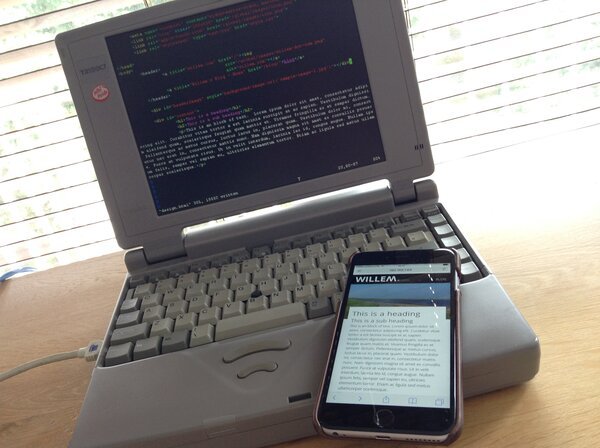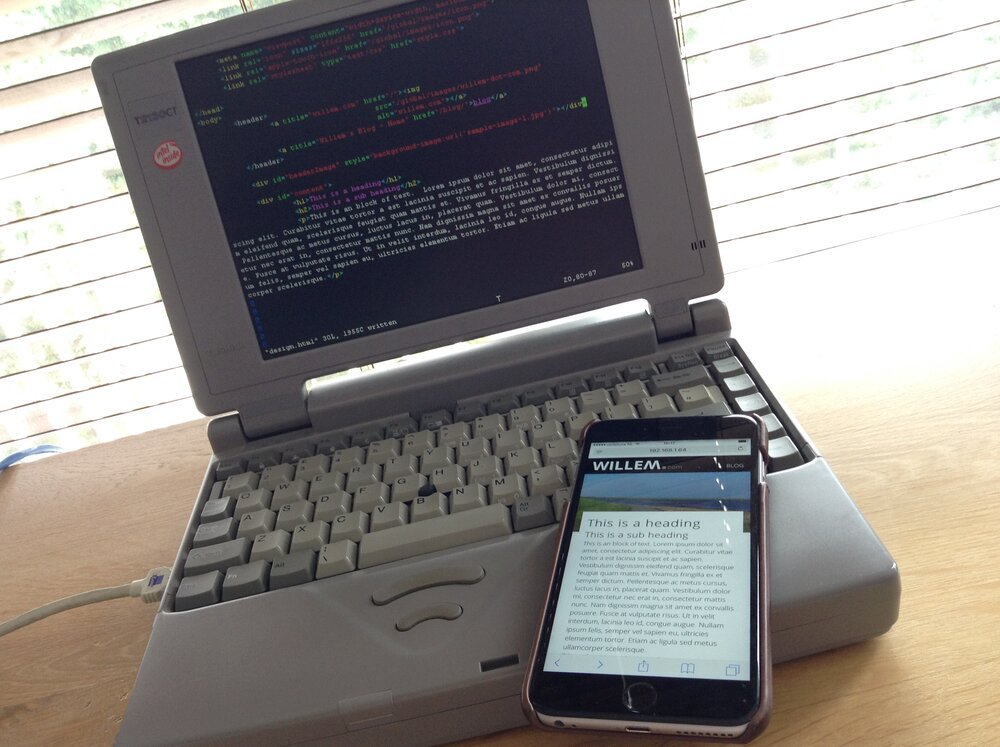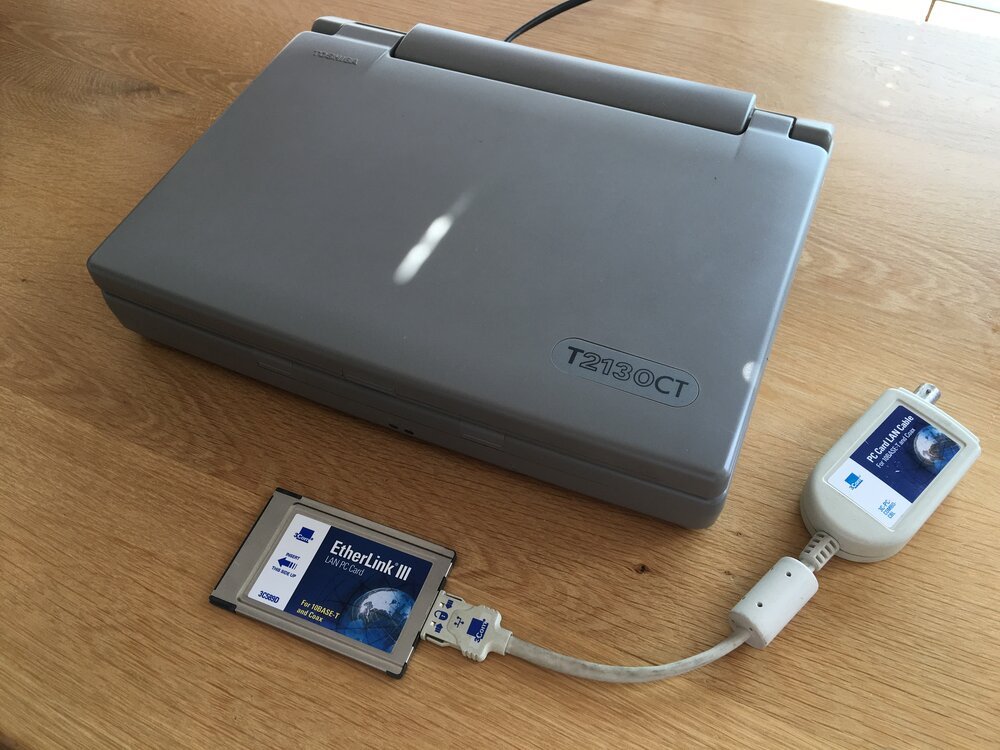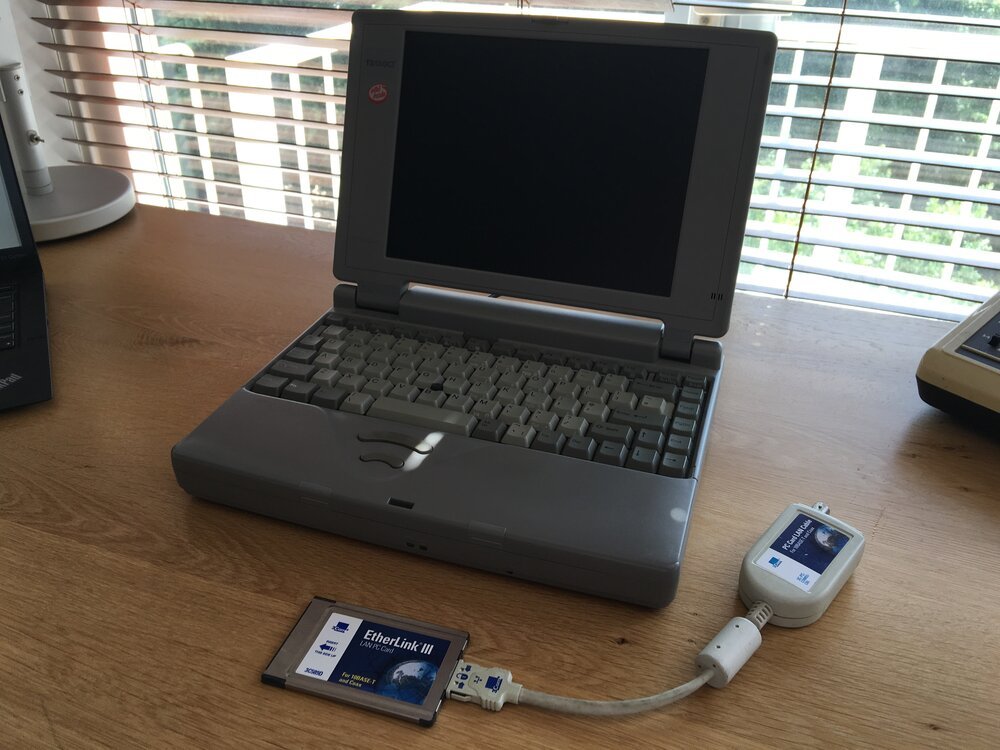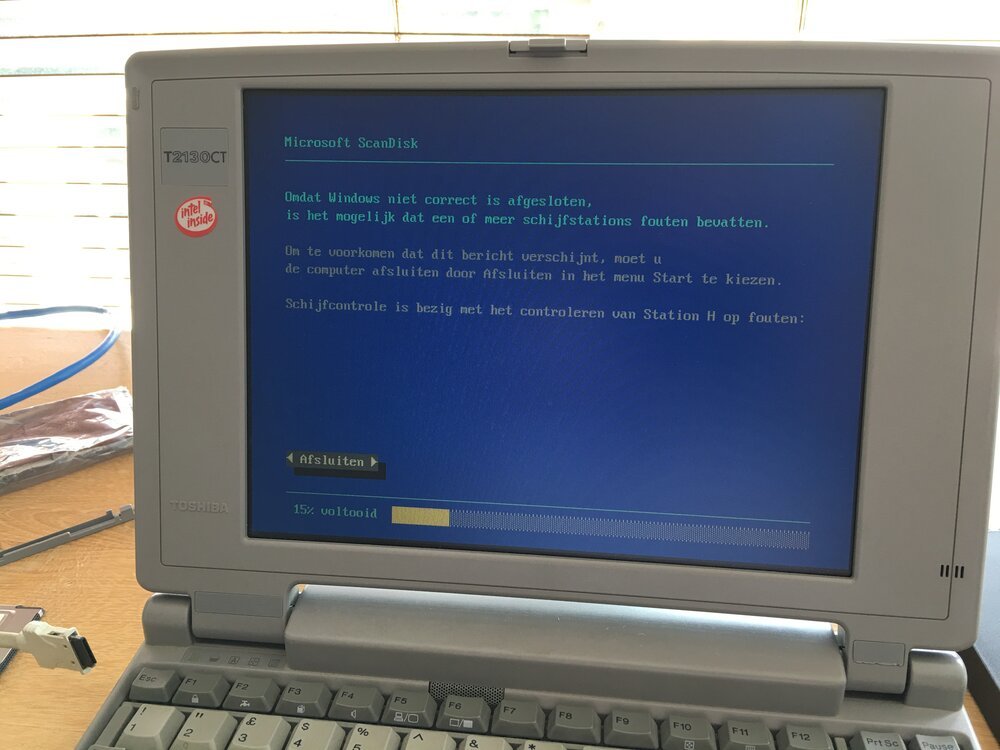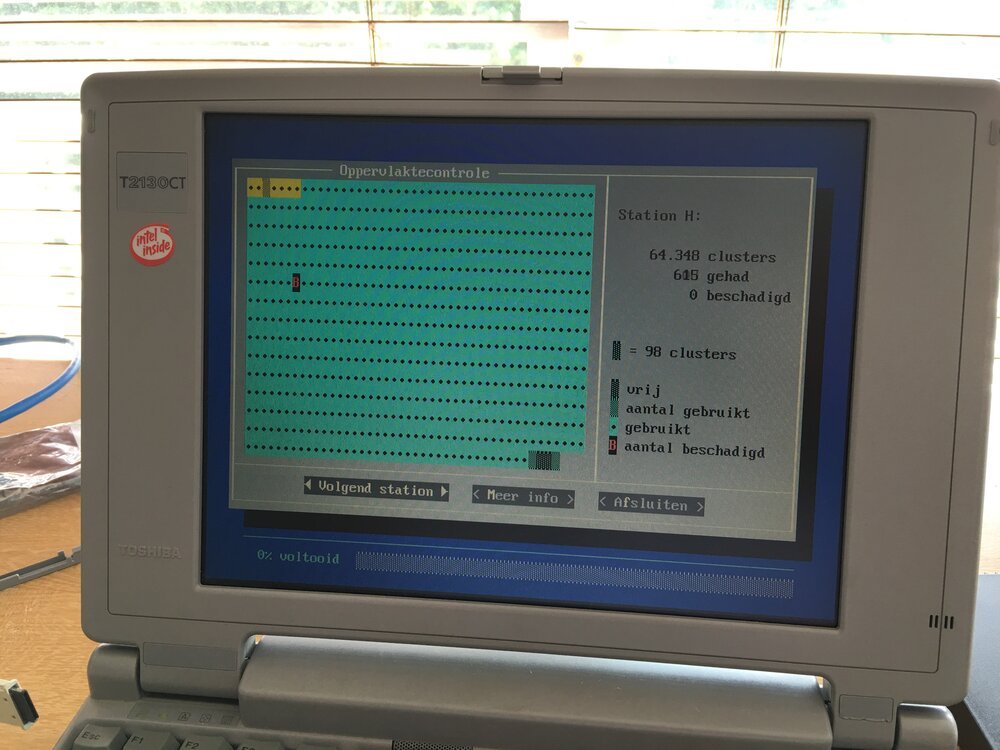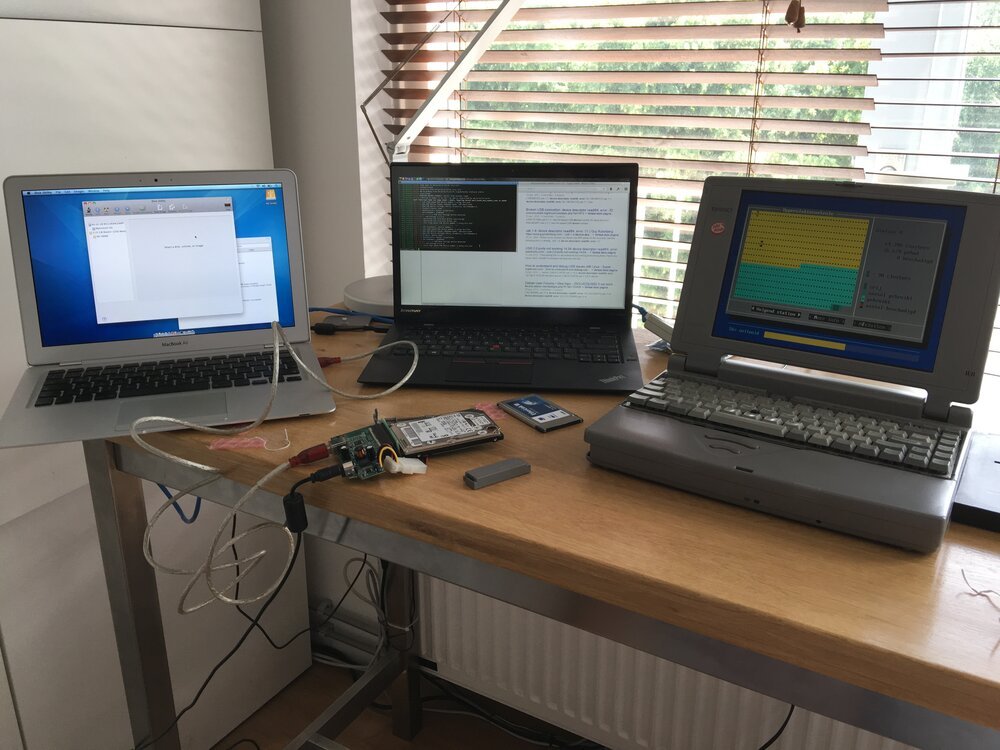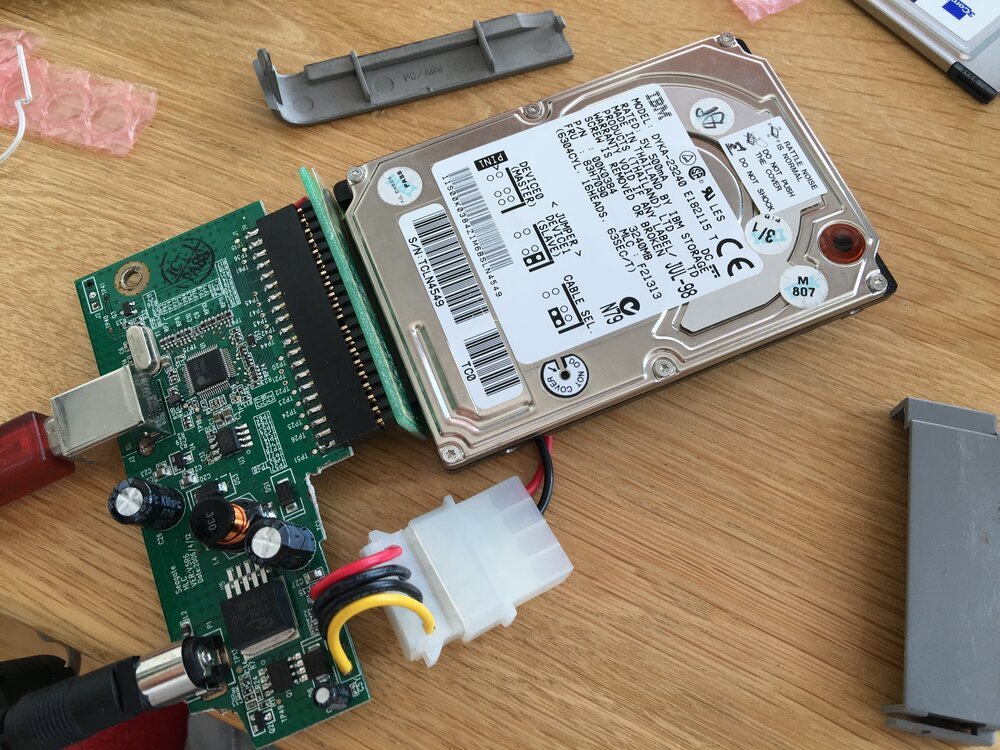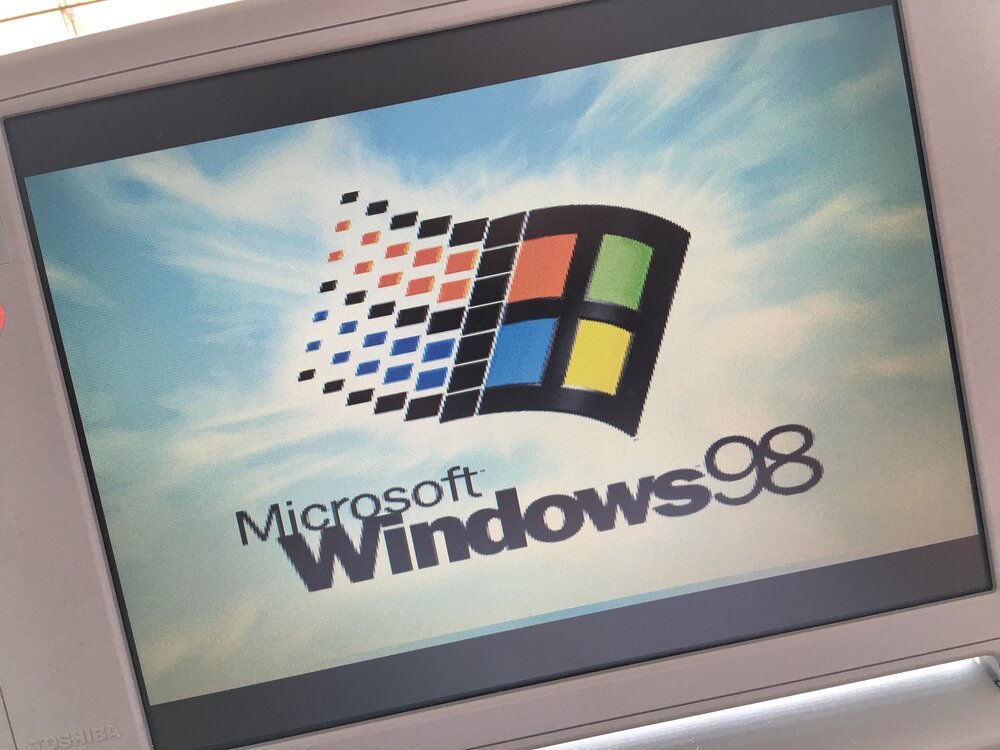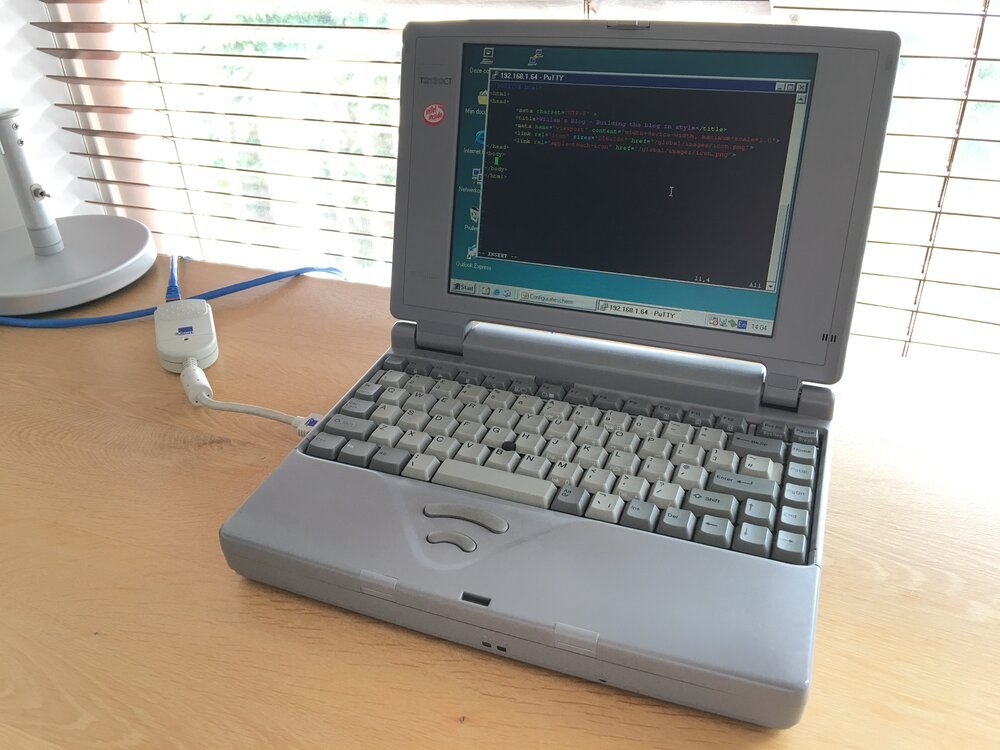June 23, 2016
Building the blog... in style!
Developing on a 20-year old computer with 16MB RAM and Windows 98
One must be a bit crazy to come up with the idea to build a blog (as in: actual programming) on an old 486 laptop with just 16MB RAM. I happen to be that crazy: I took my very first laptop from the 90s and decided to find out if it was possible to turn it into a development machine.
The laptop
It was around 1999 when I used all my savings to buy my first computer, it was a second-hand Toshiba T2130CT with mighty impressive specs:
- Intel 486DX4 processor running at 75Mhz
- 16MB RAM
- 500MB harddisk drive (that I later upgraded to a 2.1GB disk)
- 3.5" floppy disk drive
- dual PCMCIA socket
- 10-megabit 3COM PCMCIA network adapter
- 65,536 colors TFT display with a resolution of 640x480 pixels
- integrated MousePoint ("knub-style" rubber dot) mouse
- battery life of about 20 minutes
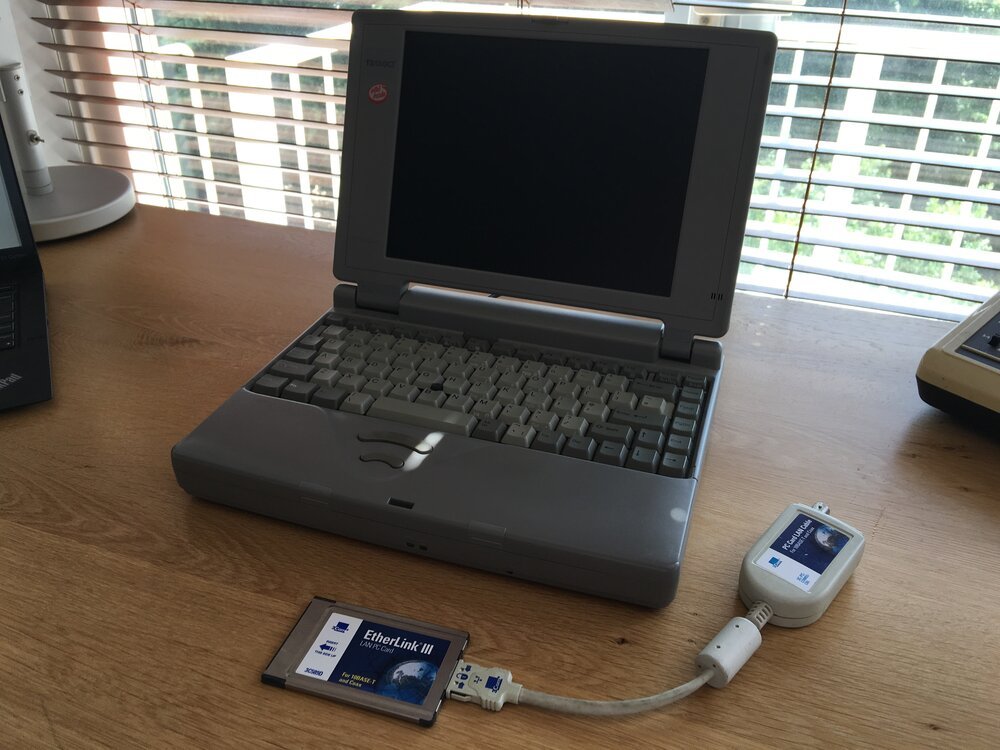
When the machine was newly released, in 1995, it was the top model. I got it as a second-hand refurbished unit from a local computer seller for a whopping 1,000 Dutch Guilders (which in todays money is roughly the same as a E1,000). As a young student I fiddled around with it and used it to program my first software in BASIC and websites in HTML.
Get it to work
After years of collecting dust bunnies in the closet I wondered if the machine was willing to power on, it didn't. The computer greeted me with a "invalid boot disk" message. Obviously it either suffered from amnesia or something else was causing it not to boot.
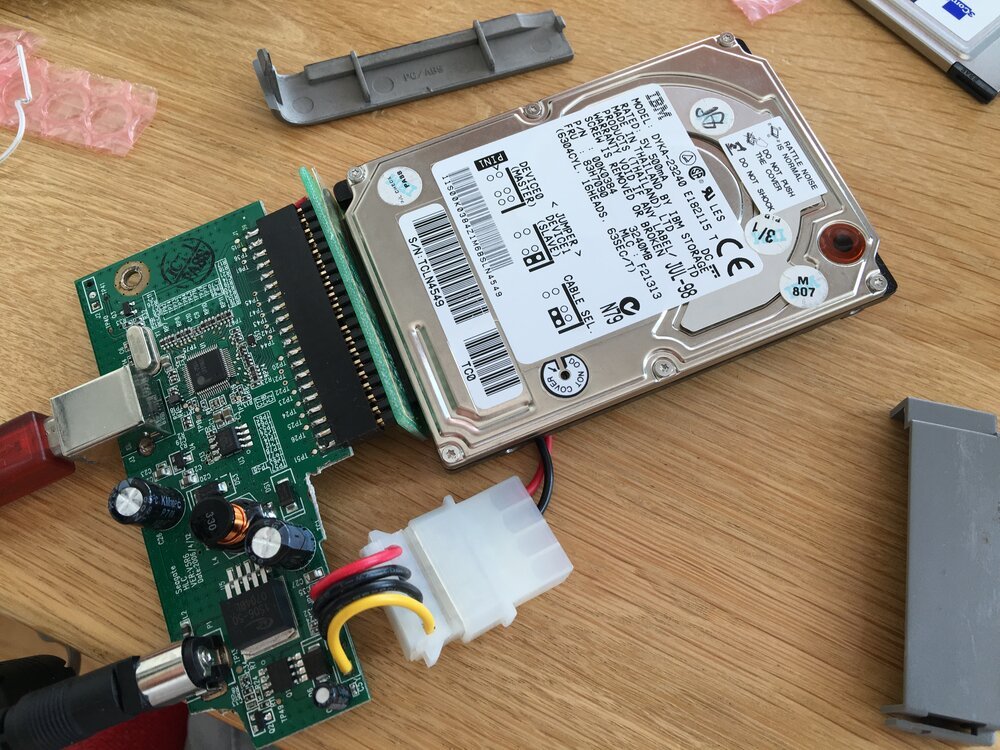
I suspected the harddisk to be the problem and decided to hook it onto my modern computer. My daily Linux machine was unable to talk to the disk, but I had some more luck with connecting it to a MacBook Air. The OS X Disk Utility identified the disk correctly and I was able to browse the contents of the 2,1GB disk (it's a funny thing to realize that even smartwatches today have more memory than my precious old laptop). I checked the file system for errors and once cleared I reinstalled it into the Toshiba. Unfortunately it didn't make any difference: the "invalid boot disk" remained.
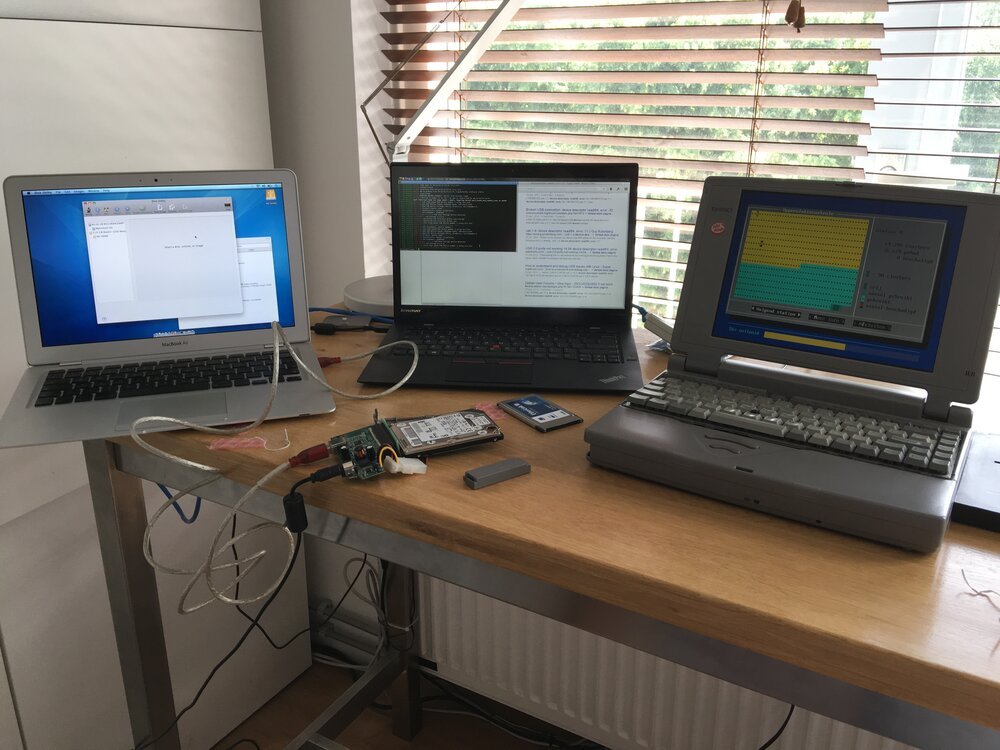
Fortunately I also had the original 500MB harddisk drive (that was installed before I upgraded the disk at a later moment). The laptop did recognize its original 500MB disk and started to boot. I almost forgot it existed when I saw Microsoft Scandisk prompt itself to have disk examined. So with one disk working and the other not... it must be something else!
As often with computer science the solution was a logical one: because the computer was disconnected from any power source for a long time, the BIOS battery was empty. That caused the basic computer settings, such as the date/time to be reset. Among the BIOS settings there was the option for harddisk interface mode. Once the harddisk interface mode was set to "enhanced IDE" the computer was ready to boot using the larger 2.1GB disk.
Windows 98 and the modern internet
Never was I so happy to see the Windows 98 boot screen. It's funny to realise that today's boot screens are far less colourful, but then again todays boot screens are only visible for a few seconds. The old laptop took its time and once it finished booting I was ready to take it onto the next level: connecting it to the modern internet!
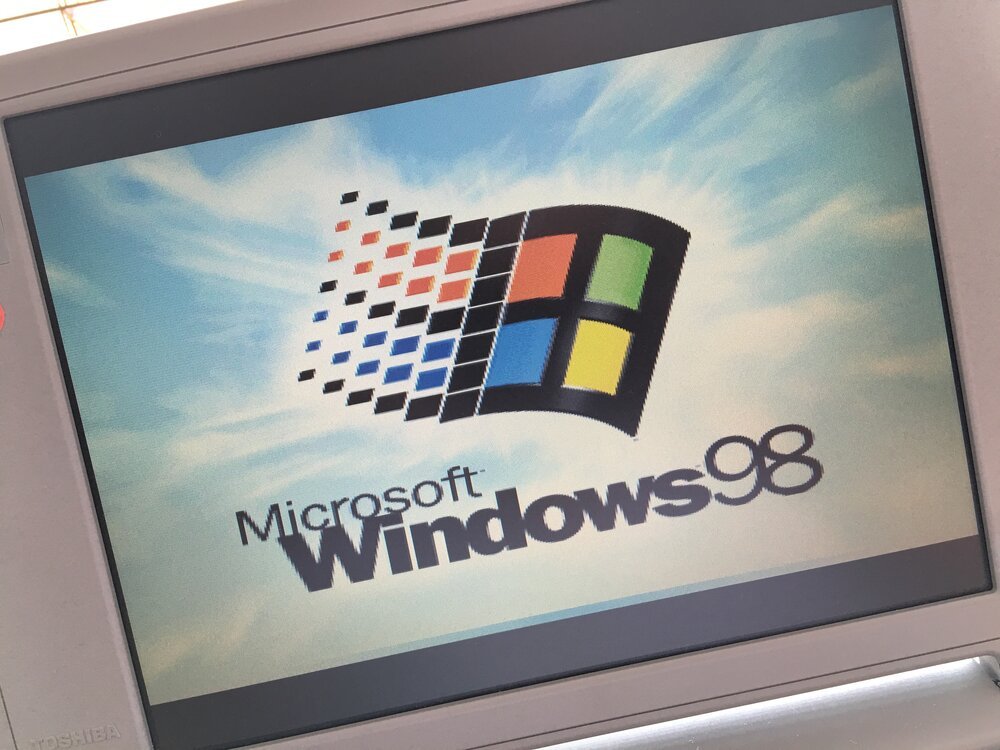
Modern laptops have most hardware integrated, but back in the day it was common to plug in additional hardware (such as network adapters and modems). Somewhere in 1999 I bought a 10-megabit 3COM PCMCIA network adapter. As fast as some computer technologies develop themselves the internet protocol is actually very much the same today as it was in the 90s. This made it relatively easy to connect the old laptop to my local network using an ordinary network cable.
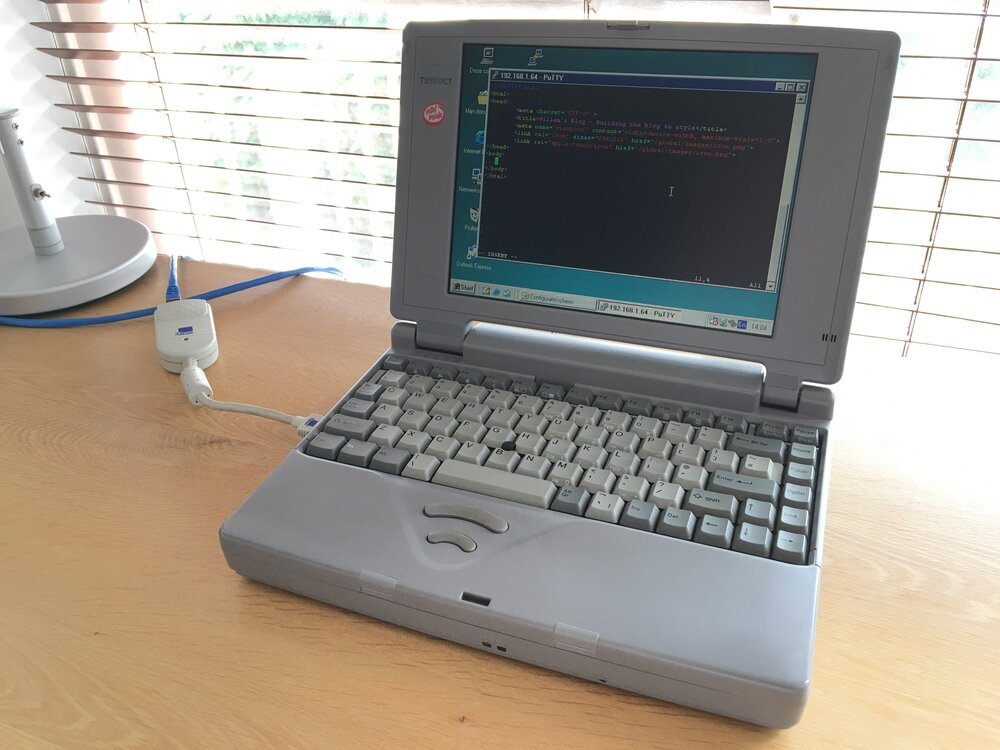
On a security note: one must be very careful to connect such an old computer directly to the public internet. Any old computer makes an interesting target for computer viruses. Since I am the local network administrator I was relatively sure that it was safe to connect the computer. (And if it was to blow up it would have made an interesting passage in this story I guess...)
Development tools: cloud power
So how good is Windows 98 then for modern software development? Well forget about fully fledged modern integrated development environments, there is no modern web browser and if something crashes on Windows 98 it is possible the entire computer freezes (due to the way the Windows 98 manages its processes). But, it ain't all bad: Notepad is there, the Windows file Explorer and I managed to find a compatible copy of PuTTY! Using PuTTY you can login other computers and use their software offering as it where on the local machine.
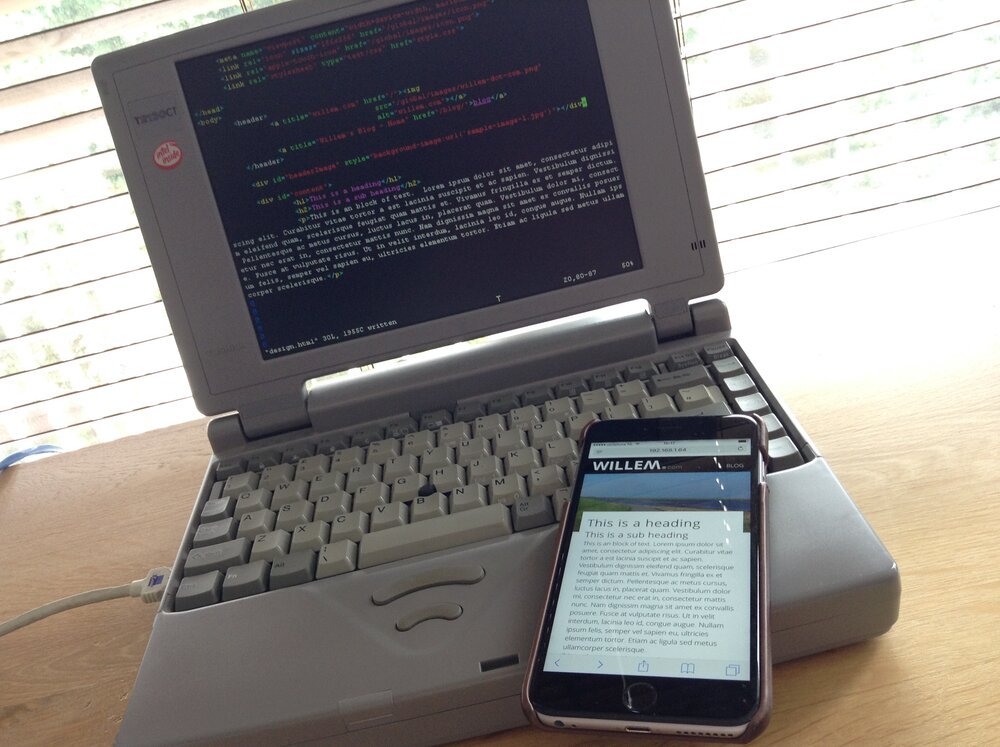
With PuTTY I connected the old laptop to a modern Debian Linux virtual machine running in the cloud. The old computer became like "a Window" into the modern (development) world, making it totally possible to program this weblog!
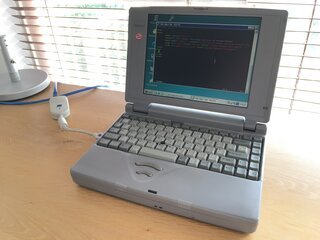
Download
If you enjoy reading offline, this article is available for download:
Translations
This article is available in the following languages:
RSS / Atom
Grab one of the feeds to stay up to date, the feeds contain the full posts:
